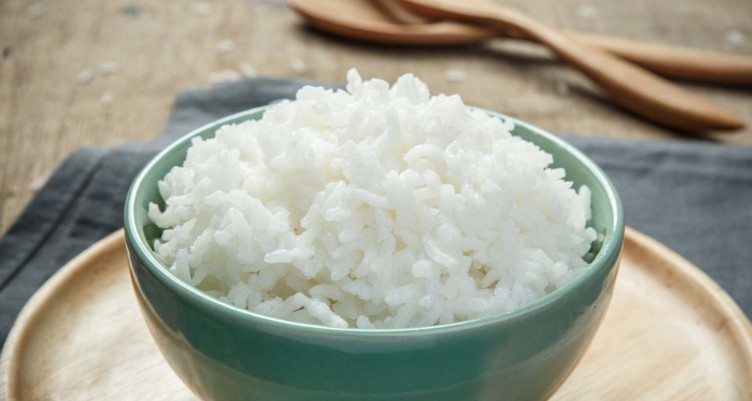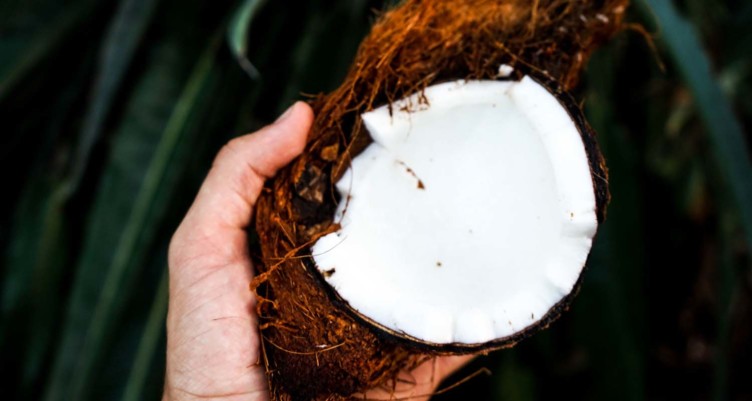Low-Carb Rice With Honey Recipe

White rice is a great source of clean carbohydrates. Coconut oil is a quality fat on the Bulletproof Diet. But what about the two together? Research suggests that when you combine coconut oil and white rice, you can get the nutrients from both — while lowering your glycemic response.
Cyclical ketosis, aka keto with occasional higher-carb meals, is an important part of the Bulletproof Diet, and white rice is one of the most Bulletproof carbs around.
But it’s easy to overindulge on rice, and too much of any carb isn’t good for you. Carbohydrates can spike your blood sugar levels, leading to energy crashes, weight gain, insulin resistance and a host of other issues.[1]
What if you could hack your white rice to avoid this problem? What if you could decrease its glycemic index, increase its health benefits and make it more Bulletproof, all with a simple change to the way you cook it?
All it takes is a little coconut oil. Read the research below. Click here to jump to the recipe.
How to upgrade your rice with coconut oil

According to a group of researchers who presented at the American Chemical Society in spring 2015, coconut oil may also be the key to upgrading your rice. Though the research is still preliminary, the results look promising and there’s zero risk to trying it.
What the study found
The researchers steamed rice normally, making just two modest changes: They added coconut oil before cooking the rice, and afterward, they cooled the rice down in a fridge. Researchers already knew that cooked-and cooled or parboiled rice were higher in gut-friendly resistant starch than freshly-steamed rice.[2]
The results were profound, though not for the reason the researchers report. The calories in the rice decreased by 10-12 percent, and they’re optimistic that with more research, they can raise that number to 60 percent.[3]
So, what about carbs? When you cook coconut oil and rice together, the oil binds to the digestible starch in the rice — that’s the starch that converts to glucose. Once bound with the oil, the digestible starch begins to crystallize, creating another form of starch: the resistant variety.
The researchers found that cooling the rice after cooking it promoted crystallization, leading to a shocking 10 to 15-fold increase in resistant starch compared to normally prepared white rice.[4]
Related: Resistant Starch 101: A Complete Beginner’s Guide
Our bodies convert digestible starch into glucose, which raises blood sugar levels. Resistant starch is different. Humans don’t digest resistant starch, so it doesn’t raise blood glucose. In fact, for some people, certain types of resistant starch can lower glucose and insulin levels after meals.[5]
Therefore, the benefit of cooking rice with coconut oil is twofold:
- The rice produces a smaller spike in blood sugar because you get more resistant starch to take the place of digestible starch.
- Moreover, the inherent qualities of the resistant starch decrease this smaller spike even further.
The result is lower-carb rice.
It’s a strange and paradoxical concept, but it’s appealing. With a significantly lower glycemic index, rice no longer has to be limited to an occasional treat. If you love rice as your carbohydrate source, rejoice! Delicious cooled rice dishes like sushi are already a good choice, and you can step that up a lot more if you cook the rice yourself (and if you’ve never made your own sushi, try it! It’s a blast).
Enjoy this quick dessert recipe. It’s appropriate for days when you are going to dip out of ketosis, but it won’t spike your blood sugar the way junk food or sugar would. If you eat a little in the evening, you may experience an amazing boost in sleep quality.
White rice vs. brown rice: Which is better?
It usually shocks people when I tell them that white rice is better for you than brown rice. But there are several reasons why white rice is my starchy carbohydrate of choice.
Turning brown rice into white rice removes phytic acid — an anti-nutrient that stops us from absorbing minerals — and leaves both an easily digestible carbohydrate. It also reduces arsenic, which is concentrated in the thin outer layer than makes brown rice brown.[6] Arsenic content in rice varies widely from country to country and by types of rice, but you can avoid higher levels of arsenic entirely by sticking with white rice.
Get the recipe:
Low-Carb Rice With Honey Recipe
https://www.bulletproof.com/recipes/low-carb/low-carb-carbs-hack-your-rice-with-coconut-oil-recipe/
Ingredients:
- 1 cup organic sushi rice
- 1 ½ cups water
- Pinch of Himalayan pink salt
- 2 tbsp. grass-fed butter
- 1 tsp. raw honey
- 3 tbsp. coconut oil
Instructions:
- Bring water to a boil.
- Rinse rice well in cold water and drain.
- Add rice and coconut oil, reduce heat to low, cover, and cook for 20 minutes.
- Remove rice from heat and immediately transfer it to the fridge. Let rice cool in the fridge for 1 hour, or longer. You can portion out the rice before putting it in the fridge so that it cools more quickly. (Think chunks shaped like your thumb, like you’d use for nigiri sushi)
- When rice is cool, set oven to warm.
- Remove rice from fridge and put in oven until warm.
- Drizzle butter, raw honey, and salt.
- Enjoy.
Makes: 4-6 servings
White rice also happens to be the perfect vehicle for all kinds of tasty things: bacon, grass-fed butter, veggies … the list goes on. Try Salmon Onigiri Rice Balls, a Paleo Steak Bowl or Strawberries and Cream Rice Pudding.
Subscribe to our Recipe Lab newsletter for delicious recipes delivered to your inbox weekly!



